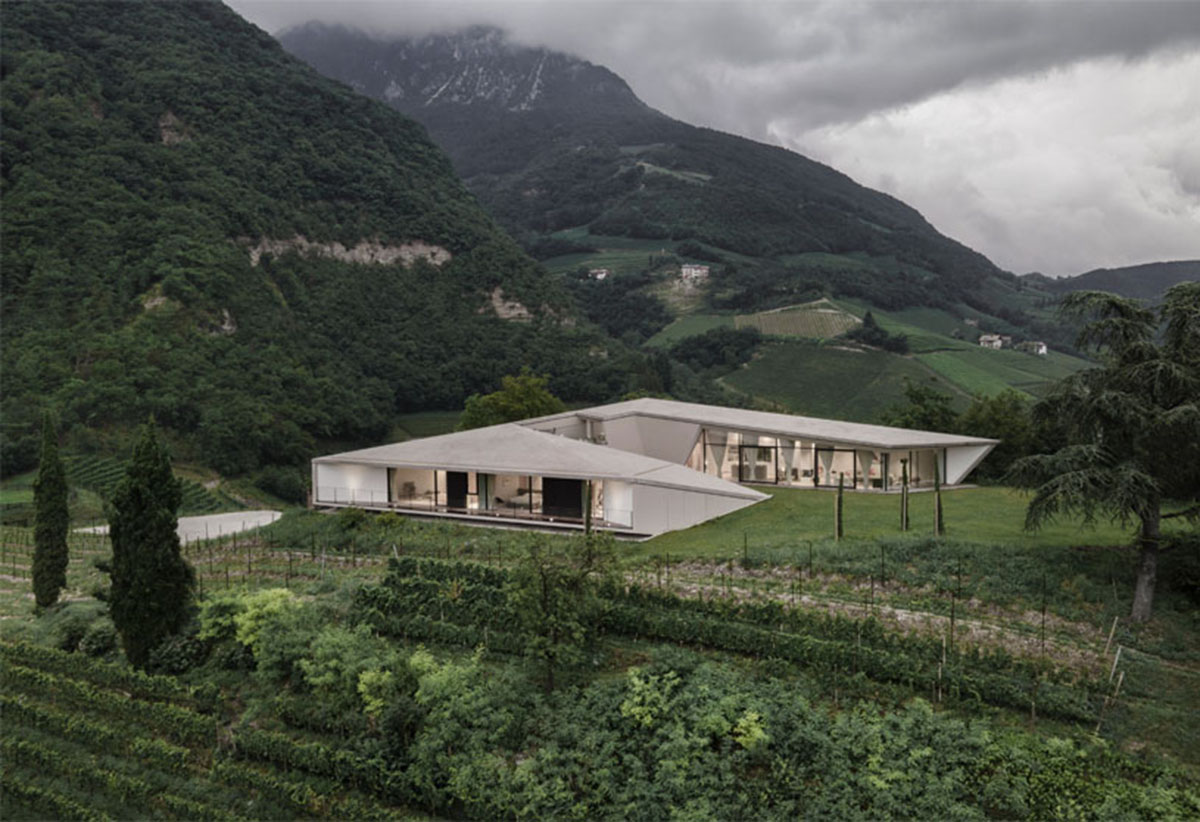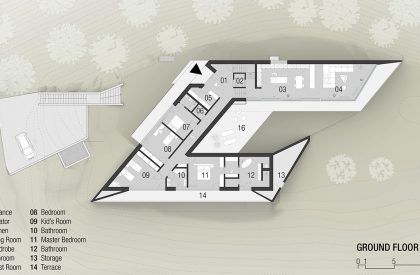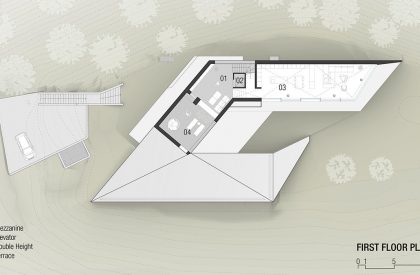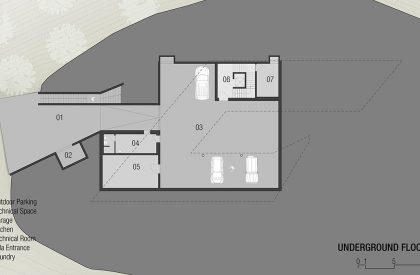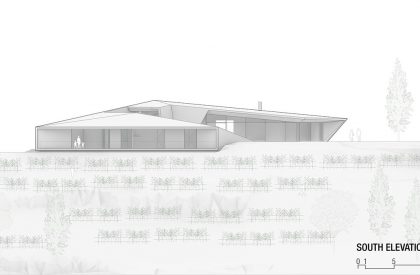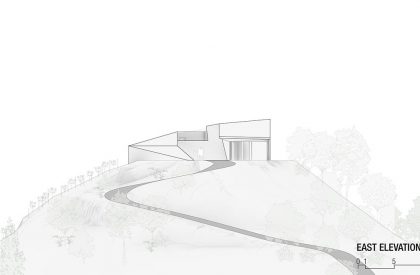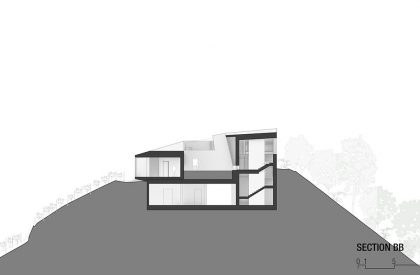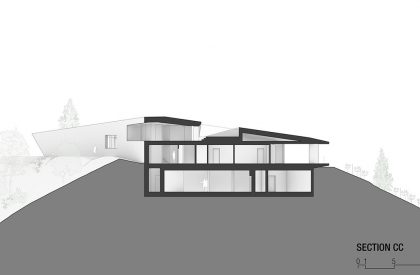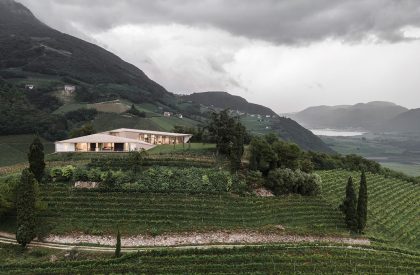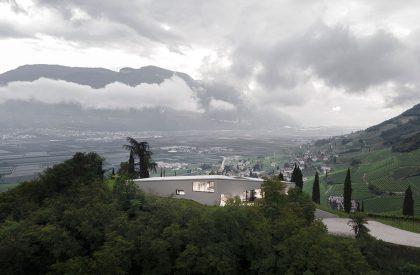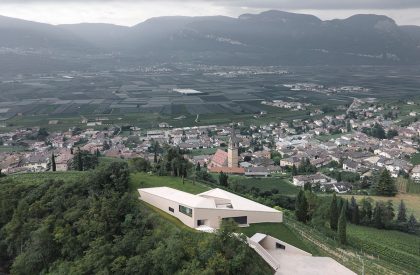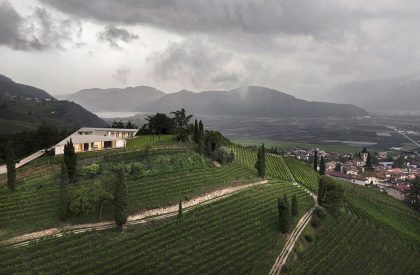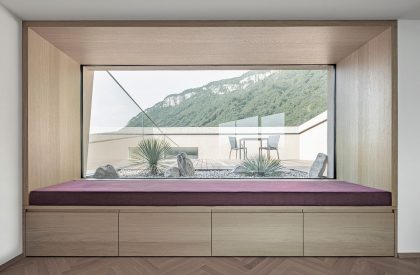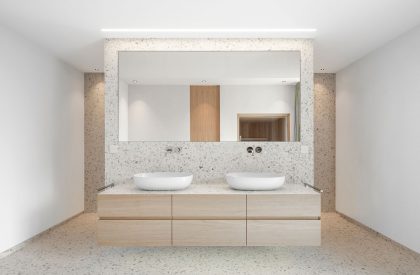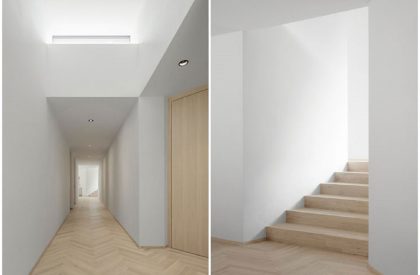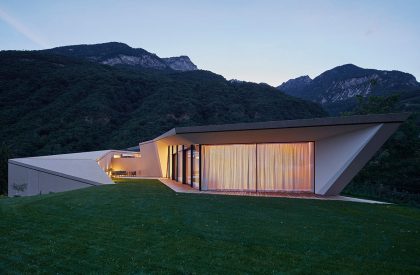Excerpt: Kastelaz Hof is a residential project designed by Peter Pichler Architecture. The geometry of the villa evolves from local site conditions. It creates a flowing and harmonious transition with the landscape and is barely noticeable from the close village. The ribbon-like structure that emerges from the natural landscape creates an internal courtyard that offers protection from the strong wind coming from Garda Lake.
Project Description
[Text as submitted by the architects] The new villa is located in South Tyrol, North Italy in the wonderful Alpine landscape of Termeno, renowned for being the home of the Gewürztraminer wine.


In 2018 PPA won an invited competition to replace an old existing structure on top of the ‘Kastelaz’ vineyard with a new villa, owned by a well-known wine-producing family from the area. The site is nestled within mountain valleys, the vineyard, a forest, and close Caldaro Lake, providing a 360-degree landscape view.



The geometry of the villa evolves from local site conditions. It creates a flowing and harmonious transition with the landscape and is barely noticeable from the close village.
The ribbon-like structure that emerges from the natural landscape creates an internal courtyard that offers protection from the strong wind coming from Garda Lake. The external materiality replicates the existing retaining walls from the surrounding vineyards, made of chalkstone, mirroring their same texture and color.
https://youtu.be/62HX2wF37t4

The structure is divided into three ‘wings’ that enhance light and connections between indoors and outdoors. An internal courtyard connects all the spaces, blending seamlessly into nature.



The wide glass façades are designed to frame and highlight the surroundings and to let the landscape enter the indoor spaces while maintaining internal privacy. The interiors are characterized by local materials creating a warm yet simple and minimal atmosphere. Materials such as concrete and wood, are used to create continuity through the house and the outdoors.
